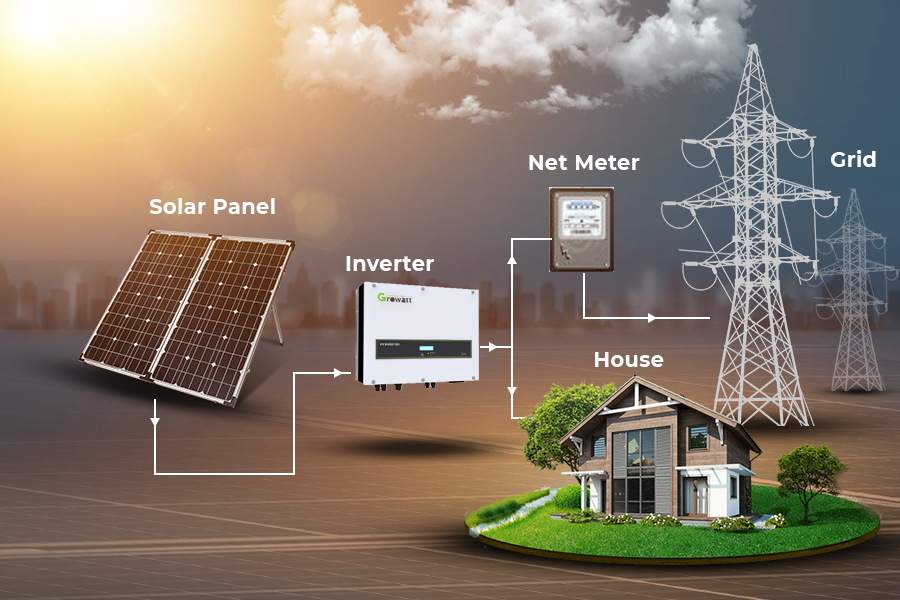As the world embraces renewable energy, on-grid solar systems are becoming an increasingly popular choice for homeowners and businesses. These systems are also known as grid-tied solar systems because they are directly connected to the local electricity grid. In this blog, we’ll explore what an on-grid system is, how it works, and its benefits and limitations.

What is an On-Grid Solar System?
An on-grid solar system generates electricity through solar panels, which is then used to power homes or commercial buildings. When the panels produce more energy than needed, the excess electricity is sent to the local grid. In return, users often receive credits through a system called net metering. This makes on-grid systems a cost-effective and practical solution for those who live in areas with reliable electricity infrastructure.
Unlike off-grid systems, on-grid solar setups do not require battery storage. Instead, the grid acts as a giant battery. During the day, when solar production is high, you consume solar energy directly. At night or during cloudy days, when solar production is low, you draw electricity from the grid.
How Does an On-Grid System Work?
- Solar Panels convert sunlight into direct current (DC) electricity.
- A Solar Inverter converts DC electricity into alternating current (AC), which powers your home or business.
- Excess Energy is sent to the grid through a net meter, tracking both the electricity you consume and the excess you export.
- Grid Power supplements your energy needs when solar generation is insufficient.
Key Benefits of On-Grid Solar Systems
-
Lower Costs:
Since there’s no need for expensive battery storage, on-grid systems are typically the most affordable solar solution. -
Net Metering:
Net metering allows you to get credits or payments for sending excess energy back to the grid, significantly reducing your electricity bill. -
Simplified Maintenance:
On-grid systems have fewer components, making them easier to maintain compared to off-grid or hybrid systems. -
Scalability:
These systems can be easily expanded by adding more panels to increase electricity generation.
Drawbacks of On-Grid Systems
-
Grid Dependency:
If the local grid goes down, your system will stop supplying power to your home. This is a safety measure to prevent line workers from injury during grid repairs. -
No Backup Power:
Without batteries, you don’t have backup power during outages, which could be a disadvantage in areas prone to blackouts. -
Limited in Remote Areas:
On-grid systems only work where a reliable grid connection is available.
Who Should Choose an On-Grid System?
- Homeowners in Urban/Suburban Areas: If you live in a city or town with reliable grid connectivity and net metering policies, an on-grid system is a smart investment.
- Businesses: Commercial entities looking to reduce operational costs without investing in batteries.
- Those with Limited Budgets: On-grid systems have lower initial costs compared to off-grid or hybrid setups.
Conclusion
An on-grid solar system is a practical, affordable, and efficient way to harness solar power. By leveraging net metering and the existing grid infrastructure, you can reduce your energy bills and contribute to a cleaner planet. However, if having backup power during outages is critical for you, consider integrating a backup system or exploring hybrid options.
Ready to go solar? Thangam Energy Solutions offers customized on-grid solar installations that help you maximize savings and efficiency. Contact us today to learn more and make the switch to clean energy.
